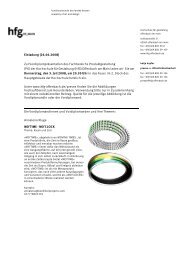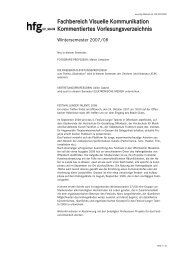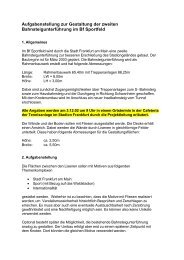User Manual
User Manual
User Manual
Create successful ePaper yourself
Turn your PDF publications into a flip-book with our unique Google optimized e-Paper software.
Power<br />
The camera can be set at two active power modes − ON or Standby − as well as OFF. In active<br />
modes, battery consumption is least in Standby mode and most in ON mode. The camera enters<br />
Standby mode to preserve battery consumption after 10 seconds (Default. Can be changed in<br />
Custom Options #1). Both the grip and the digital capture unit displays are dimmed accordingly.<br />
The digital capture unit becomes inactive after the period set in POWER DOWN (Menu > Settings<br />
> <strong>User</strong> Interface > Power Down).<br />
ON<br />
To activate the camera press the red ON.OFF button until you see the start-up H3D<br />
logo appear on the grip display. The logo is automatically followed by the main screen.<br />
The camera is now in ON mode.<br />
After a set period of inactivity (programmable in Custom Options) the camera automatically<br />
enters Standby mode, signalled by the appearance of the H3D logo again.<br />
Standby<br />
In this mode the camera is in a mainly inactive ‘standby’ mode and is ready to be immediately<br />
reactivated to the ON mode by:<br />
• pressing the shutter release button half way<br />
• pressing the Stop down button<br />
• clicking the ON.OFF button<br />
• pressing the Mirror up button.<br />
In this mode, signalled by the standby H3D II logo appearing on the grip display, the<br />
demand on the batteries is very low. It is ideal for general use where intervals between<br />
shots exceed a few seconds.<br />
Standby mode is automatically set from the ON mode after 10 seconds (default) of<br />
inactive use (programmable in Custom Options).<br />
OFF<br />
From the active screen, press (not click !) the red ON.OFF button for a half second. All<br />
buttons (except the ON.OFF button) remain ineffective, producing virtually no demand<br />
on the battery. This is the normal mode when transporting or storing the camera or<br />
where there might be a risk of inadvertently activating the camera. (However, remove the<br />
batteries if you are going to store the camera for a period of more than a few weeks).<br />
In this mode neither the viewfinder display nor grip display information is available.<br />
<strong>Manual</strong> focus<br />
There is both a <strong>Manual</strong> Focus mode setting and a <strong>Manual</strong> Override capability. <strong>Manual</strong> Focus<br />
is a specific setting that you actively make, whereas <strong>Manual</strong> Override is always available as a<br />
temporary override of an autofocus setting.<br />
In <strong>Manual</strong> Focus mode, focusing is carried out by rotating the focusing ring in the conventional<br />
manner. The focus setting remains until changed as with a conventional non-autofocus lens. This<br />
means that pressing the shutter release button will not activate a focus setting change as it does in<br />
autofocus. To change back to autofocus, you must make a new setting (by pressing the AF button<br />
and choosing AF S or AF C).<br />
With <strong>Manual</strong> Override, you can manually alter a focus setting that has been made in the autofocus<br />
mode, by rotating the lens barrel in the conventional manner and without having to change<br />
modes. As long as the shutter release button is kept at the half-press position, the new focus setting<br />
is maintained. By releasing the pressure on the shutter release button and pressing again, the autofocus<br />
function is immediately reactivated.<br />
87



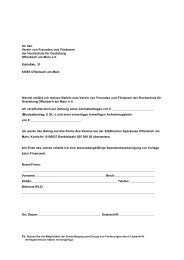
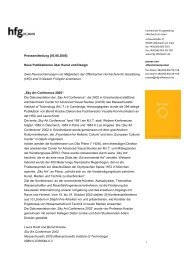


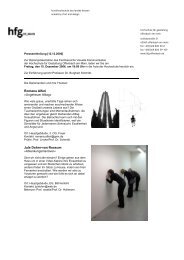

![Einladung [07.02.2006] - Hochschule für Gestaltung Offenbach am ...](https://img.yumpu.com/13375413/1/184x260/einladung-07022006-hochschule-fur-gestaltung-offenbach-am-.jpg?quality=85)

